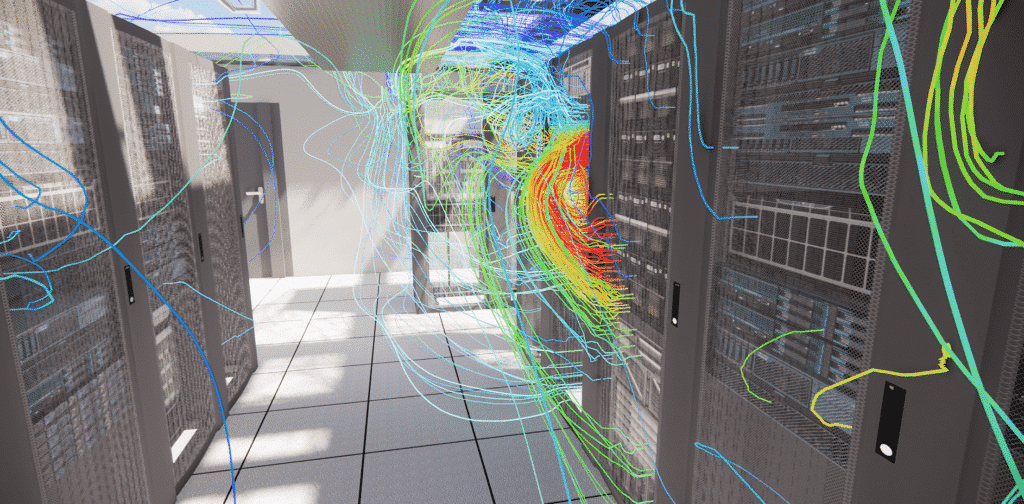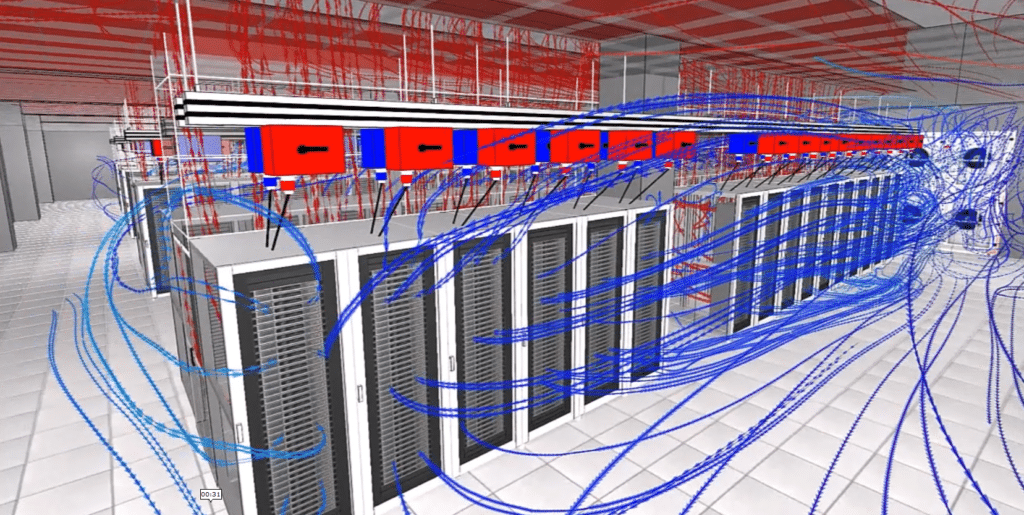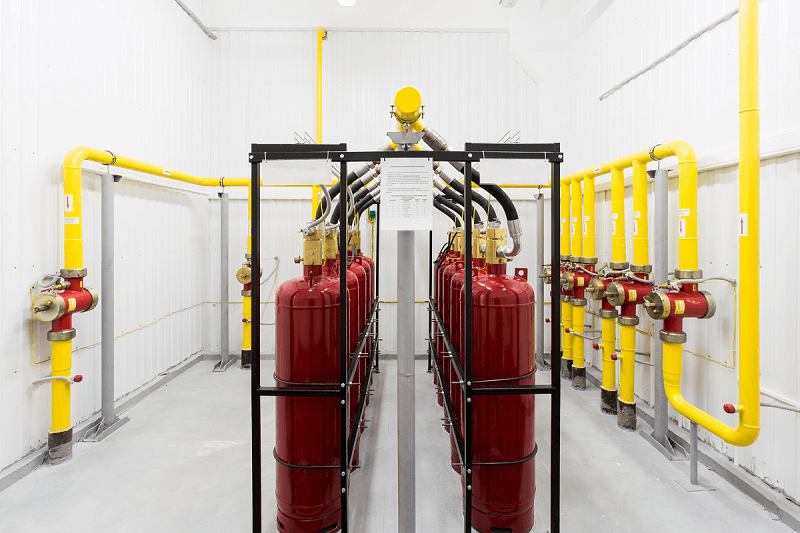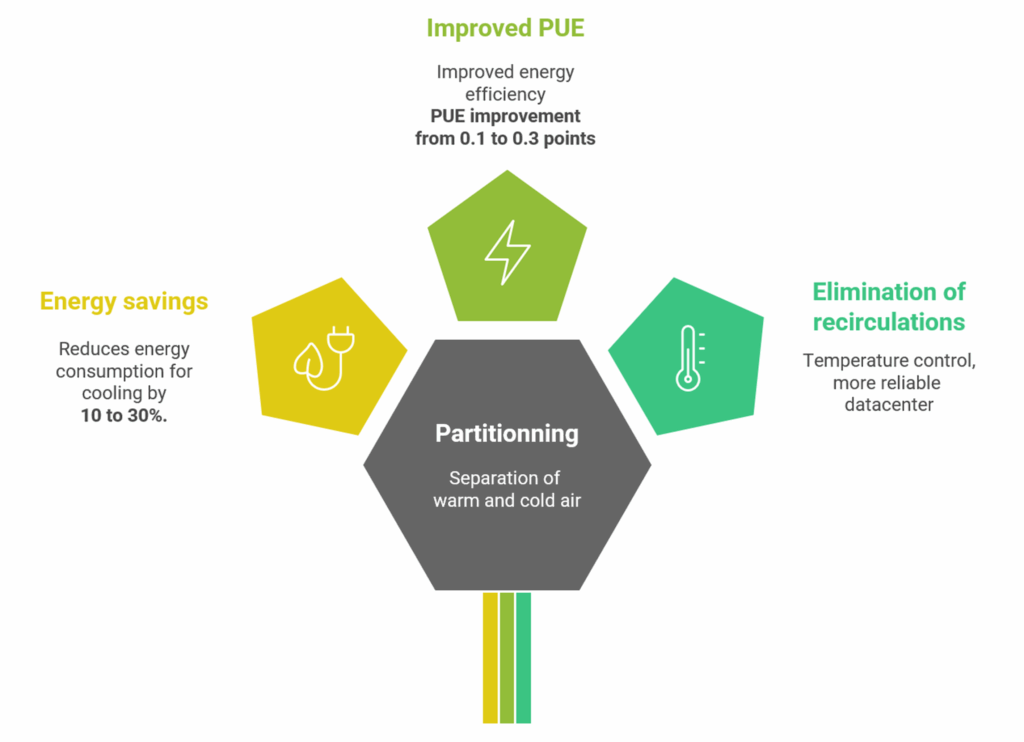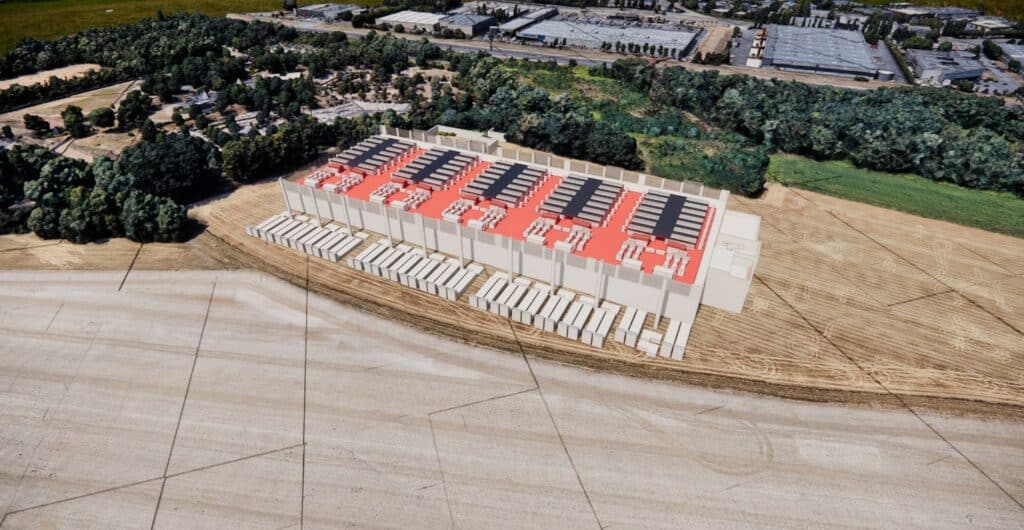Energy optimization and PUE calculation for data centers
Home » Data Center » Energy optimization and PUE calculation for data centers
Data center energy performance improvement - PUE optimization
We are experts in CFD studies and global datacenter energy analysis for sustainable PUE reduction.
- Evaluation of PUE (Power Usage Effectiveness) under actual and projected conditions
- Detailed energy analysis of cooling infrastructures
- Identification of heat loss and oversizing
- Optimization of HVAC equipment operation (chillers, AHUs, fan coil units, etc.)
- Study of the interactions between air flow, cold production and IT loads
- Comparison of energy management scenarios (free cooling, containment, redundancy, etc.)
- Detection of areas of overconsumption and proposals for targeted improvements
- Assistance with energy performance and certification procedures
Analysis of internal air flows in data centers
Air distribution and hot zone management inside data centers
Data centers are very energy-dense environments, where several hundred kilowatts can be concentrated in a few square meters. This thermal density calls for rigorous management of air circulation, to efficiently evacuate the heat generated by IT equipment and maintain stable operating conditions. The cooling system thus becomes a central element of the energy strategy, frequently accounting for over 30% of the site’s overall electricity consumption.
With this in mind, CFD studies carried out by EOLIOS enable us to virtually reproduce the behavior of air flows and temperatures throughout the datacenter, taking into account the specific features of the installation (architecture, IT power, ventilation equipment, etc.). This dynamic 3D modeling makes visible what is not visible: overheating zones, pressure imbalances, hot air recirculation, preferential or stagnant paths. These phenomena, often invisible to the naked eye, can lead to a gradual deterioration in thermal efficiency and increased exposure to the risk of material damage.
Study of the thermal plumes of a data center
Precise analysis of air distribution is therefore a priority lever for optimization. Not only does it guarantee a homogeneous supply of cold air to computer racks, it also ensures that the heat extracted is properly evacuated, without undesirable interaction with incoming flows.
Optimization of data center ventilation and equipment
CFD studies provide concrete technical elements for optimizing the configuration of existing installations or guiding the design of new computer rooms. In particular, they enable us to :
- Determine the optimum positioning of perforated slabsin technical floors, based on the actual thermal requirements of each bay.
- Validate or correct the configuration of hot and cold aisles, identifying areas of air mixing or short-circuiting.
- Evaluate the effectiveness of containment systems, quantifying their impact on flow separation and server inlet temperature.
- Adjust the control of air handling units (CRAC/CRAH) according to the local thermal load, temperature gradients and pressure drops measured in the various air paths.
These simulations make it easier toidentify weak points and margins for improvement, in an approach guided by the objectives of energy performance, thermal safety and operational reliability. Thanks to this approach, it is possible to achieve better temperature control while reducing ventilation effort and associated energy consumption.
Reducing heat loss - CFD in support of energy efficiency
Controlling recirculation and air mixing - The importance of effective partitioning
Theenergy efficiency of a datacenter depends to a large extent on the ability to maintain a clear separation between the cold air blown to the IT racks and the hot air extracted by the equipment. In fact, effective partitioning usually results in a typical 0.1 to 0.3 point improvement in PUE.
When this separation is imperfect, recirculation or mixing can occur, reducing cooling efficiency by 20 to 40%. Cold air is then misused, or prematurely reheated, forcing systems to work harder to compensate, resulting in higher energy consumption.
CFD studies enable us to visualize these critical zones precisely. They reveal hot air recirculation in cold aisles, air leaks through slabs or structures, or cold air flows that bypass bays without cooling them effectively. These malfunctions, often invisible in conventional surveys, are dynamically modeled to understand their causes and propose concrete improvements.
Implementation of containment solutions
To reduce these losses, containment solutions are a particularly effective approach. By physically partitioning hot and cold aisles, air flows can be better controlled, mixing limited andcooling directed precisely where it’s needed.
EOLIOS supports its customers in the design and validation of these systems. As each architecture is unique, simulations enable us to evaluate several possible configurations – with or without false floor, in hot or cold aisles – and measure their impact on equipment inlet temperatures and flow behavior.
These studies lead to recommendations adapted to the site’s constraints, with a clear objective: to guarantee efficient cooling by reducing heat loss, while optimizing energy consumption linked to ventilation and cold production.
Dynamic adjustment of cooling to datacenter computing load
Simulation of evolving thermal loads
Data centers are not static environments. IT workloads are constantly changing, whether as a result of progressive increases in IT power, server consolidation, or the integration of new technologies. This variability calls for continuous adaptation of the cooling system to avoid any energy or thermal drift.
Thanks to numerical simulation, EOLIOS models not only the current state of the datacenter, but also projected scenarios. This makes it possible to assess the behavior of air flows and temperatures in the event of rack densification,partial room activation orlocalized load increases. This approach validates the correct sizing of cooling equipment, and ensures that the current configuration remains efficient in the face of future developments.
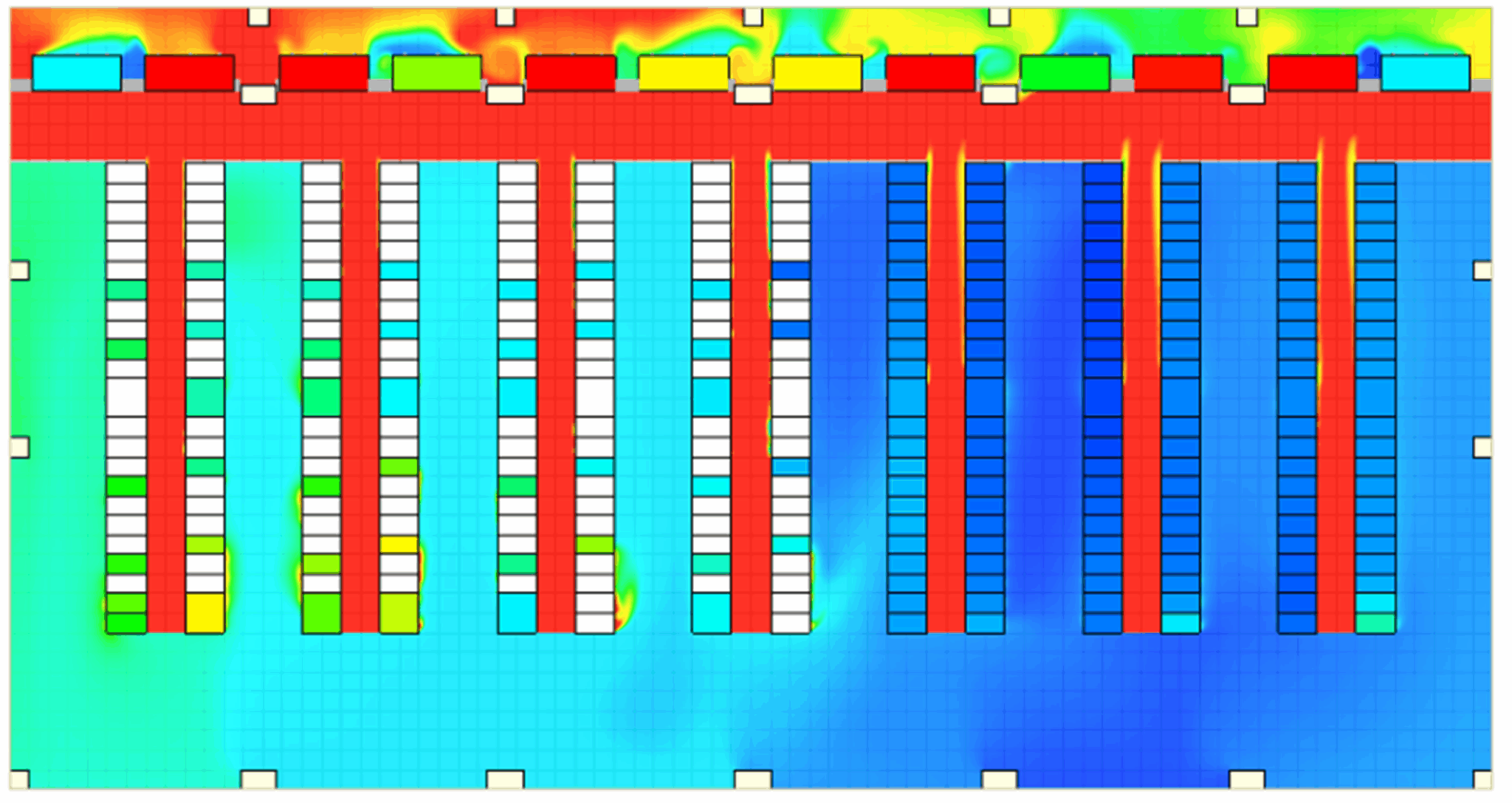
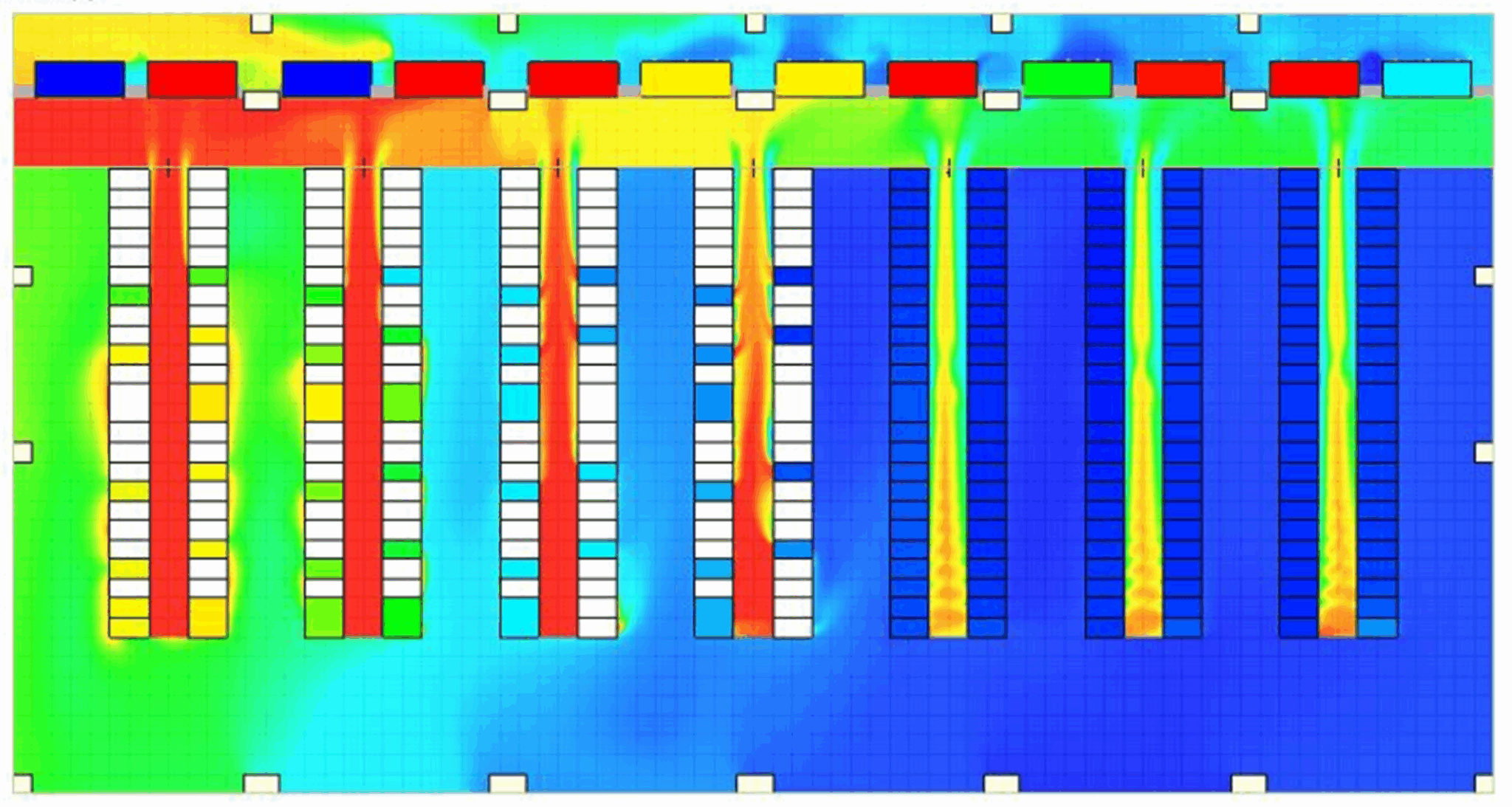
Temperature difference between two data hall cooling configurations
Intelligent control and energy modulation
A dynamic vision of the datacenter also paves the way for finer, more intelligent energy management. By understanding how flows react to load variations, it is possible to adapt ventilation and cooling power in real time to actual equipment requirements, without oversizing installations.
This fine-tuned regulationprevents over-cooling during periods of low activity, while guaranteeing optimum thermal comfort during peak loads. The result is a significant reduction in overall energy consumption, as well as a longer service life for ventilation and cooling systems, which are less overstretched.
Support for the valuation of CEE premiums
Turning energy efficiency into financial leverage
In a sector where every kilowatt-hour counts, data centers are at the heart of energy performance issues. The ” Certificats d’Économie d’Énergie ” (CEE) scheme offers a concrete opportunity to finance actions to reduce consumption, provided that the savings achieved can be rigorously demonstrated. Thanks to its expertise in thermal and aeraulic flows and advanced digital modeling, EOLIOS is able to support its customers in the design, justification and valorization of CEE-eligible projects.
The aim of each study is to quantify precisely the energy gains achieved by targeted actions: improving hot/cold containment, adjusting control setpoints, repositioning refrigeration equipment, or reconfiguring ventilation.
These optimizations, although often invisible to the naked eye, result in significant reductions in consumption, which can be monetized via CEE if they are properly documented.
Modeling, calculations and supporting documents adapted to the requirements of the system
The preparation of a CEE file – whether based on a standard operation sheet or a specific project – requires arigorous demonstration of energy savings, often backed up by measurements, precise operating hypotheses and proof of the sustainability of the results. EOLIOS mobilizes its expertise in CFD simulation and energy auditing to provide the reliable, traceable technical data required by instructing bodies.
Each project is :
- A detailed before-and-after energy analysis,
- Technical reports to help put together the application file.
EOLIOS‘ digital tools maximize your chances of obtaining the CEE premium, while ensuring consistency with your operating objectives. The result: a direct financial gain that boosts the profitability of your energy efficiency investments.
Improving the energy performance of data centers - Towards an optimized PUE
Performance indicators and management tools
Improving PUE (Power Usage Effectiveness) is often the central indicator in adatacenter’s energy optimization approach. CFD studies make a direct contribution to this by providing a better understanding of air and heat flows, and therefore a finer regulation of the thermal environment.
By fine-tuning air distribution, limiting over-cooled zones and eliminating pockets of heat, simulations make it possible toachieve greater temperature homogeneity in cold aisles. This thermal stability means that safety margins can be reduced, and cooling capacity can be precisely modulated according to actual requirements. The result is a significant reduction in the power consumption of cooling systems, and an improvement in overall PUE.
Visualize results and support decision-making
The studies produced by EOLIOS are not limited to technical modeling: they are designed as genuine decision-making tools. The results are presented in the form of visual maps – thermal and aeraulic – but also via comparative scenarios and clear performance indicators, directly usable by technical teams and decision-makers.
This approach enables you tomake objective choices, justify investments or technical modifications, andsupport datacenter upgrades with a precise vision of their energy impact.
Study of data center rooftop cooling systems
Innovation EOLIOS - Reducing excess roof energy consumption
Optimizing the layout of rooftop equipment: an underestimated lever
In a data center, energy efficiency doesn’t just depend on cleanroom equipment: rooftop installations such as chillers, dry-coolers or cooling towers also play a key role. A poorly thought-out layout can lead to hot air recirculation, polluted or heated air intakes, or areas of turbulence, forcing cooling systems to work harder to maintain the required conditions.
EOLIOS offers an innovative approach to CFD analysis of these critical zones, focusing on the impact of the external environment on thermal performance. The aim is to maximize the EER (Energy Efficiency Ratio), i.e. the ratio between the useful cooling capacity produced and the electrical energy consumed by the cooling equipment.
These studies enable :
- Optimize the layout of rooftop equipment to limit self-heating and recirculation effects.
- Identify sources of excess energy consumption due to poor interaction between building and environment.
- And above all, to precisely quantify the difference in energy performance between several scenarios.
In many cases, judicious reconfiguration or partitioning can improve the energy efficiency of refrigeration systems by up to 10%, representing several tens of MWh per year. This fine-tuned approach can also be used to better size equipment or extend its service life. Thanks to digital simulation, EOLIOS provides its customers with concrete levers for sustainably reducing their PUE and maximizing their return on energy investment.
Control your PUE, optimize your cooling with EOLIOS
In a sector where reliability tolerates no compromise and every kilowatt counts, energy optimization in data centers is becoming a strategic necessity. Thanks to CFD digital simulation, EOLIOS can help you reach a new milestone: a better understanding of your air flows, anticipating load changes, sustainably reducing your consumption and improving your PUE.
Whether you’re looking to secure a new design or improve an existing installation, our expertise is with you every step of the way, with tailored, practical solutions.
Contact us to transform your thermal constraints into performance levers.
Find out more:
Our specific solutions for data centers :

CFD engineering for data centers
Find out more
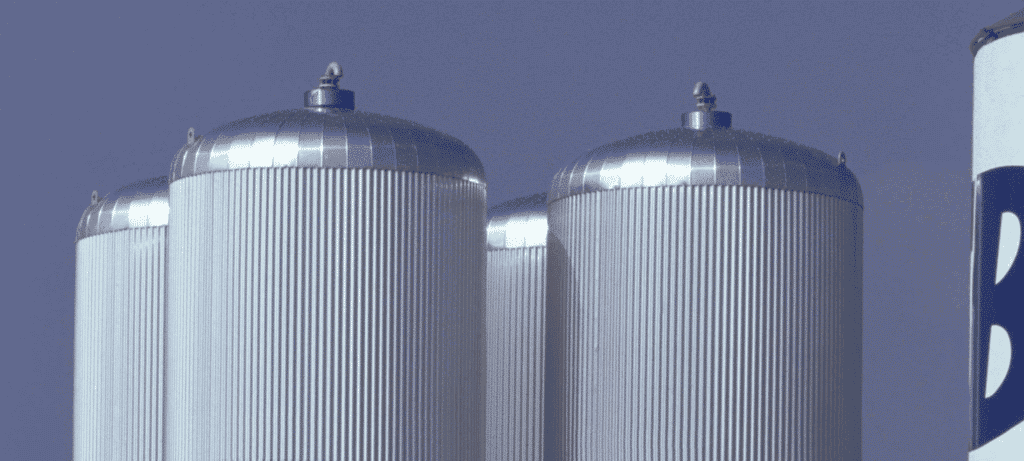
Thermal storage study
Find out more
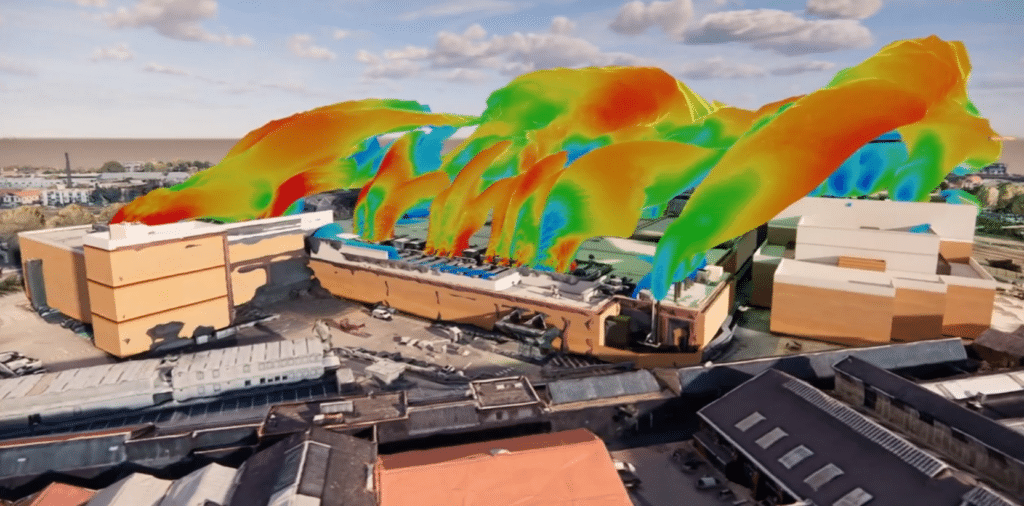
External CFD simulation for data center
Find out more
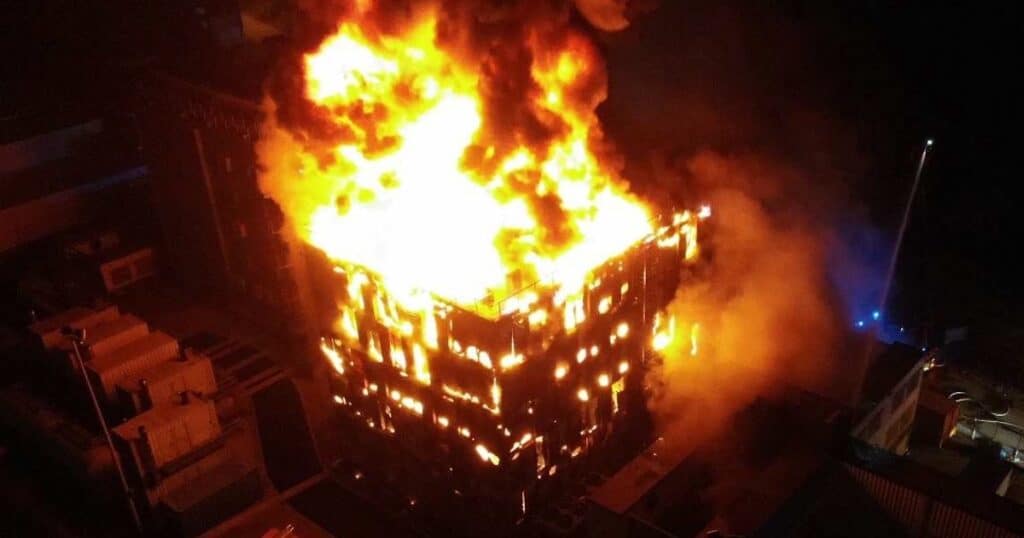
Data Center Fire Simulation
Find out more
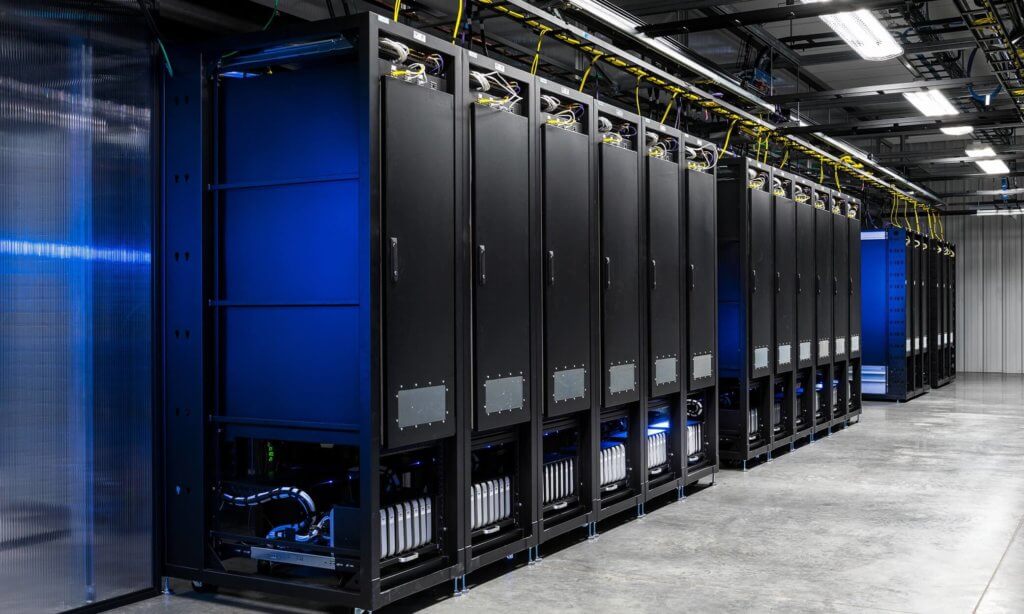
Thermal study of technical premises
Find out more
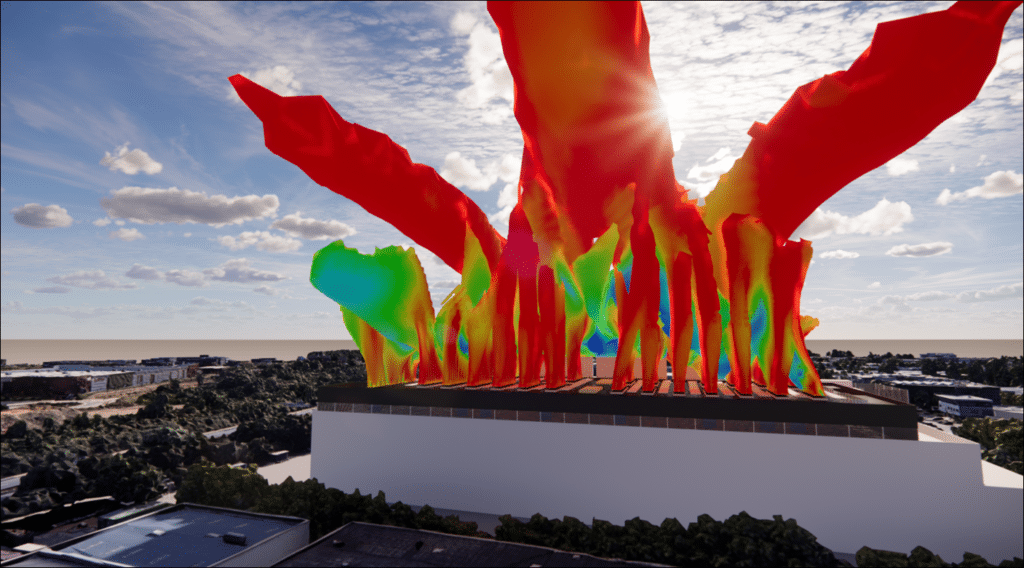
Urban heat island impact study for data centers
Find out more
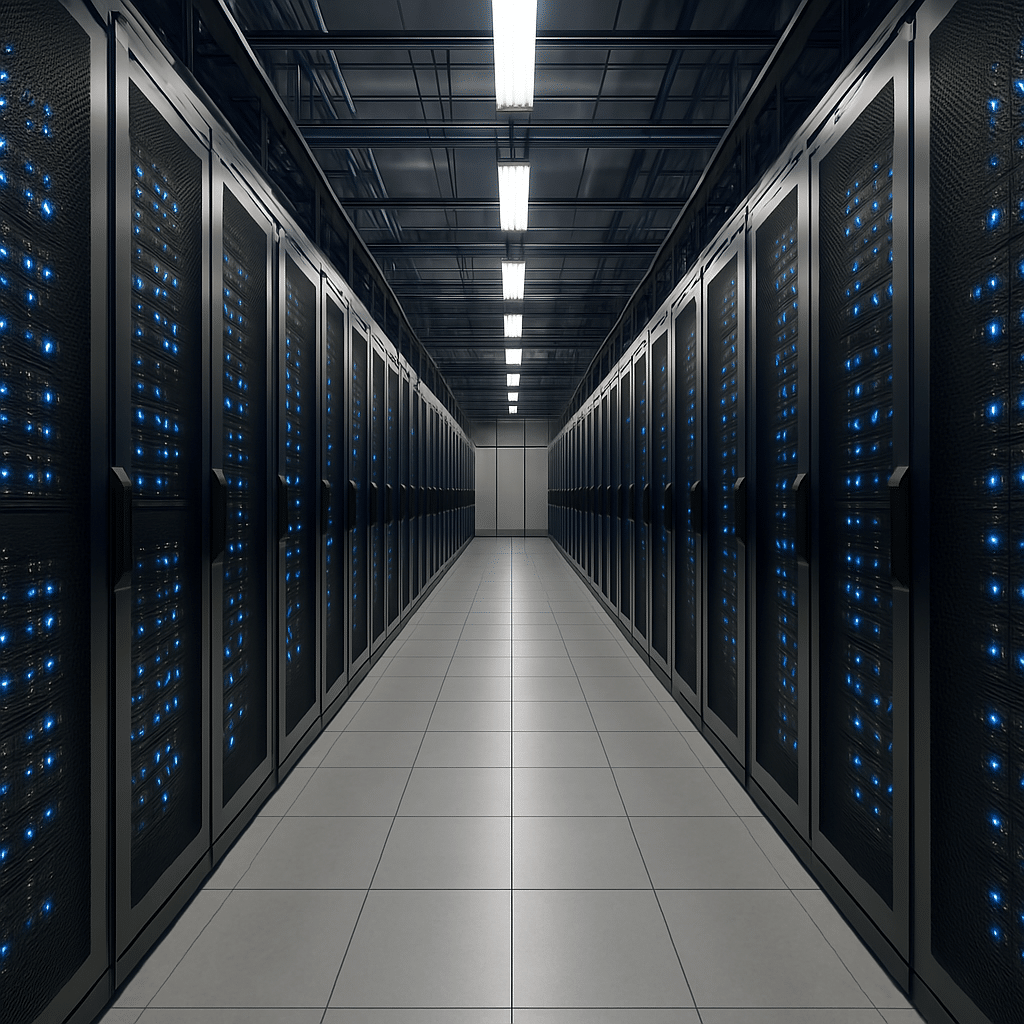
Audit, diagnosis and 3D modeling of existing data centers
Find out more
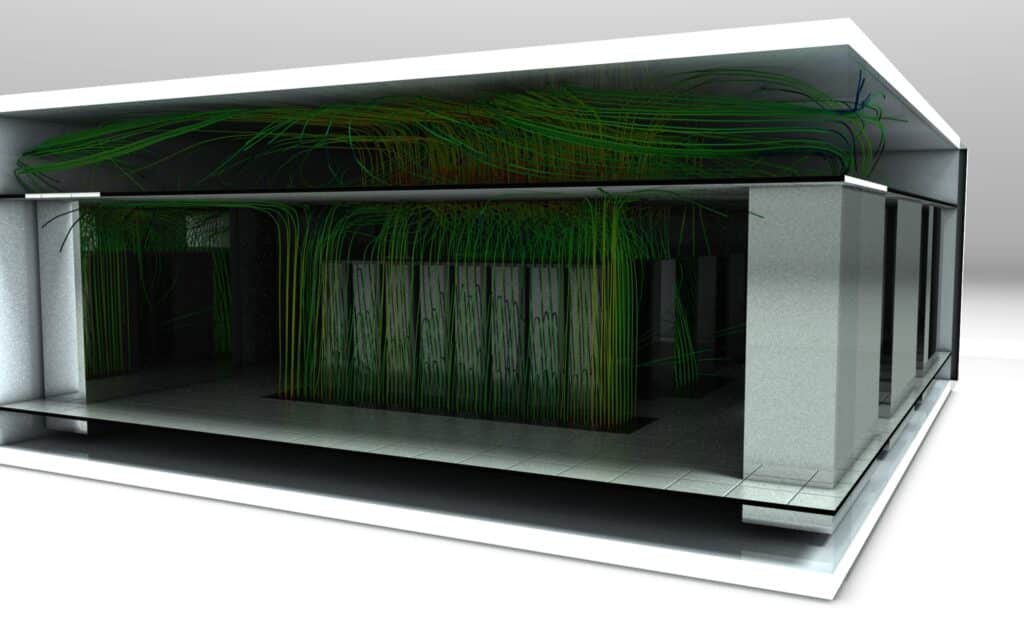
Designing your data center’s digital twin
Find out more
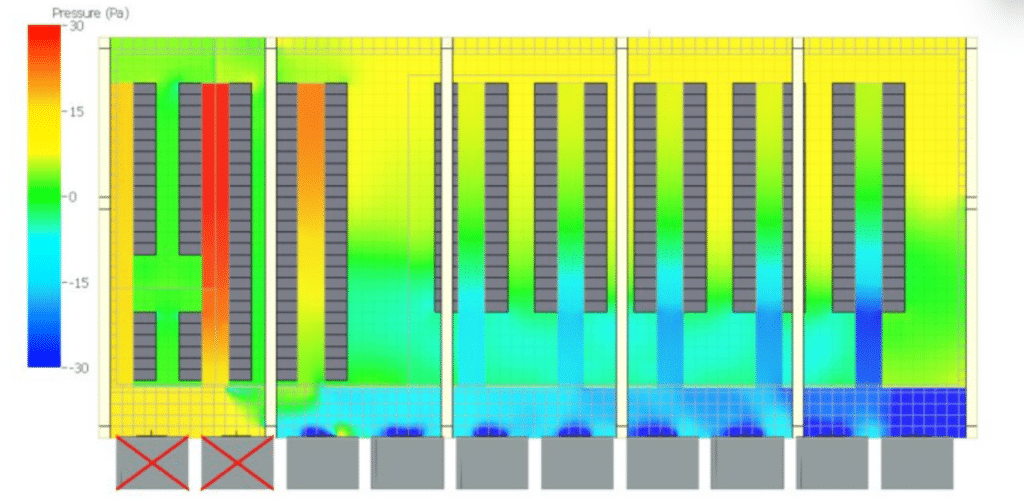
Energy optimization and PUE calculation for data centers
Find out more

Commissioning: study and CFD modeling of load benches
Find out more
Data center engineering
Initially created in France, EOLIOS Ingénierie is the benchmark thermal and aeraulic simulation consultancy for data centers in Europe and worldwide. The company supports operators, designers and project owners at every stage in the life of a data center: design, optimization, renovation or extension.
By combining cutting-edge scientific expertise, state-of-the-art simulation tools and in-depth knowledge of the data center ecosystem, EOLIOS Ingénierie is a trusted partner for ensuring the availability, security and energy performance of IT infrastructures, while anticipating sustainability issues.
EOLIOS
PARIS – LONDON – MILAN – MUNICH – MADRID – WARSAW – CASABLANCA – UNITED ARAB EMIRATES – USA

